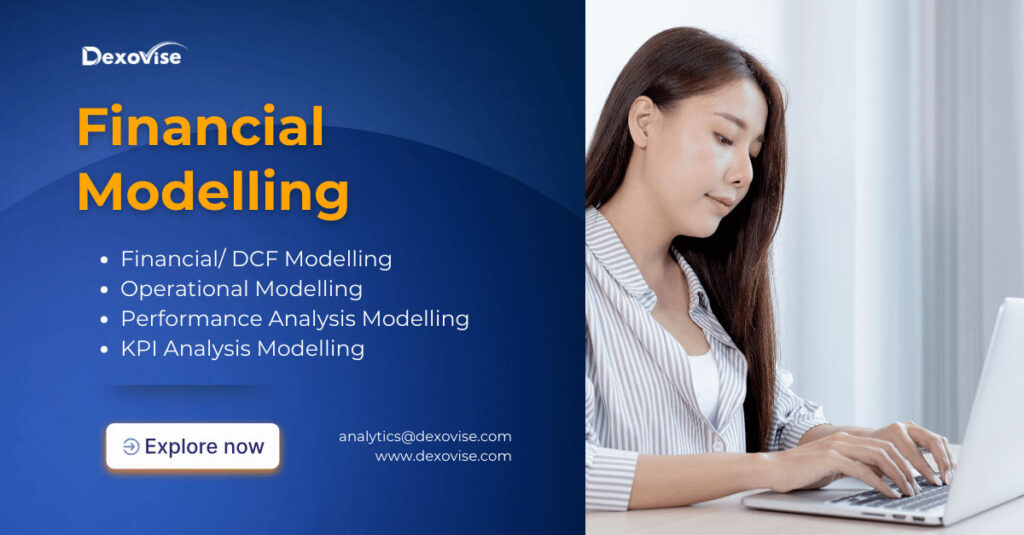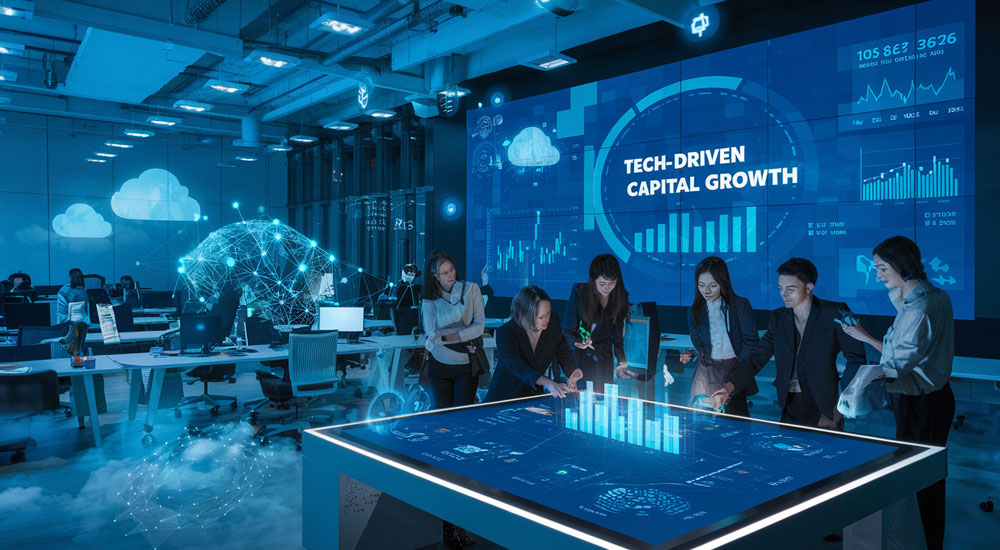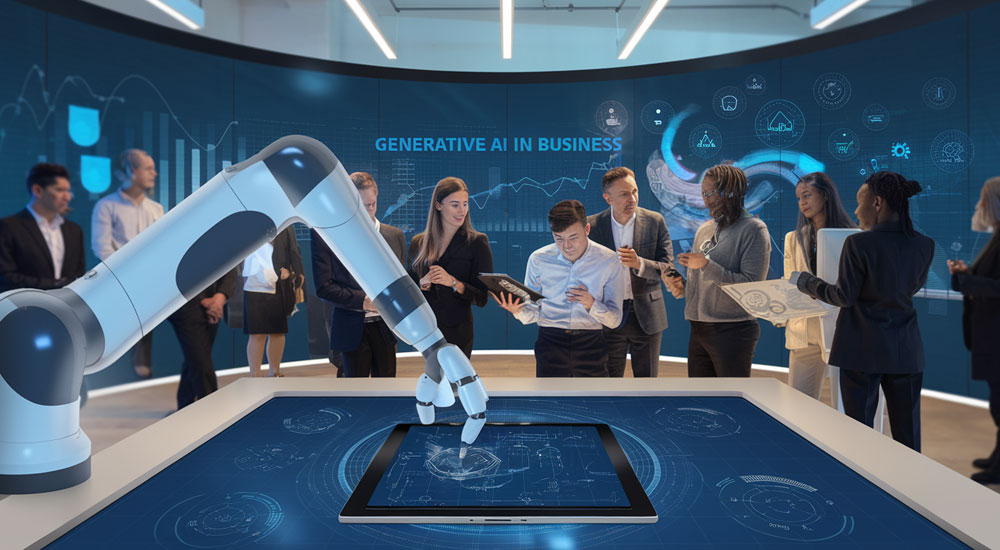Introduction

In today’s fast-paced business world, mergers and acquisitions (M&A) are no longer just about combining assets and expanding market share. The digital revolution has fundamentally changed the game, transforming how companies approach M&A strategies. 🚀💻
Are you prepared for this seismic shift? As digital technologies continue to disrupt industries at breakneck speed, traditional M&A playbooks are quickly becoming obsolete. Companies that fail to adapt risk being left behind, while those who embrace the digital age can unlock unprecedented opportunities for growth and innovation. But navigating this new landscape is no easy feat – it requires a deep understanding of emerging technologies, evolving consumer behaviors, and the intricate interplay between digital assets and traditional business models.
In this blog post, we’ll dive into the fascinating world of M&A in the digital age. We’ll explore how the digital landscape is reshaping M&A strategies, examine key technologies driving this transformation, and uncover the challenges and opportunities that lie ahead. Whether you’re a seasoned M&A professional or a business leader looking to stay ahead of the curve, this guide will equip you with the insights you need to thrive in the era of digital M&A. Let’s embark on this journey together and discover how to navigate the complex waters of mergers and acquisitions in our increasingly digital world.
Key Takeaways
As we dive into the world of M&A in the digital age, it’s crucial to grasp the essential insights that will shape our understanding of this evolving landscape. Here are the key takeaways to keep in mind:
Digital Transformation’s Impact on M&A
- Digital technologies are fundamentally changing how M&A deals are conducted and valued
- Traditional industries are increasingly becoming technology-driven, affecting acquisition targets and strategies
- The importance of digital assets and capabilities in deal valuations has significantly increased
Critical Technologies Reshaping M&A
- Artificial Intelligence (AI) and Machine Learning
- Big Data Analytics
- Cloud Computing
- Internet of Things (IoT)
- Blockchain
These technologies are not only changing the nature of target companies but also transforming the M&A process itself.
Adapting M&A Strategies for the Digital Era
- Digital due diligence has become a crucial step in the M&A process
- Cybersecurity and data privacy considerations are now paramount
- Talent acquisition and retention strategies need to focus on digital skills
- Post-merger integration must prioritize technology and digital capabilities alignment
Challenges and Opportunities in Digital-Era M&A
| Challenges | Opportunities |
| Accurate valuation of digital assets | Access to new markets and customers |
| Integration of disparate technologies | Enhanced operational efficiencies |
| Cultural differences between traditional and digital companies | Creation of new revenue streams |
| Rapid pace of technological change | Improved innovation capabilities |
Future Trends to Watch
- Increased focus on data-driven M&A decisions
- Rise of “acqui-hires” to secure digital talent
- Growing importance of ecosystems and partnerships in M&A strategies
- Emergence of new deal structures to accommodate digital business models
By understanding these key takeaways, business leaders and M&A professionals can better navigate the complexities of mergers and acquisitions in the digital age. The integration of digital technologies into M&A strategies is not just a trend but a necessity for creating value and maintaining competitiveness in today’s rapidly evolving business landscape.
As we move forward, we’ll explore each of these aspects in greater detail, starting with an in-depth look at how the digital landscape is reshaping the world of M&A.
The Digital Landscape's Impact on M&A
Technology and M&A: A Natural Convergence
In the digital age, technology and M&A have become increasingly intertwined. This convergence is driven by the need for companies to stay competitive and innovative in a rapidly evolving business landscape. Here’s how technology is reshaping the M&A process:
- Enhanced due diligence
- Streamlined deal execution
- Improved post-merger integration
| Traditional M&A | Technology-Driven M&A |
| Manual processes | Automated workflows |
| Limited data analysis | AI-powered insights |
| Lengthy timelines | Accelerated deal cycles |
| Siloed communication | Collaborative platforms |
Digital Disruption and Industry Convergence
Digital disruption is blurring the lines between industries, leading to unprecedented M&A activity across sectors. This convergence is creating new opportunities and challenges:- Cross-industry acquisitions
- Emergence of new business models
- Disruption of traditional value chains
Shift in Valuation Metrics for Tech-Driven Companies
The digital age has introduced new valuation metrics for M&A targets, particularly in the tech sector:- User engagement rates
- Customer acquisition costs
- Scalability potential
- Intellectual property portfolio
Importance of Data Assets in Deal-Making
Data has become a critical asset in M&A transactions, influencing deal structures and valuations:- Data quality and quantity assessment
- Data privacy and compliance considerations
- Potential for data monetization
Risk Management
Digital transformation has introduced new risk factors in M&A:- Technology obsolescence risk
- Digital talent retention
- Regulatory compliance in data handling
Cybersecurity Considerations in M&A Transactions
Cybersecurity has become a crucial aspect of M&A due diligence:- Assessment of target’s cybersecurity posture
- Identification of potential vulnerabilities
- Integration of cybersecurity measures post-merger
Integration of Digital Platforms Post-Merger
Successful post-merger integration now heavily relies on the seamless consolidation of digital platforms:- IT systems integration
- Data migration and harmonization
- Digital culture alignment
The digital landscape has fundamentally altered the M&A playbook. Companies must now consider a range of digital factors when planning and executing mergers and acquisitions. From the initial stages of target identification to post-merger integration, digital considerations permeate every aspect of the M&A process.
As we move forward, it’s crucial to understand how key digital technologies are specifically reshaping M&A strategies and execution. These technological advancements are not just changing the way deals are done, but also opening up new possibilities for value creation and strategic growth.
Key Digital Technologies Reshaping M&A
Artificial Intelligence and Machine Learning
Artificial Intelligence (AI) and Machine Learning (ML) are revolutionizing M&A processes, offering unprecedented insights and efficiency. These technologies are transforming due diligence, valuation, and post-merger integration.
- AI-powered due diligence: Analyzing vast amounts of data quickly and accurately
- ML algorithms: Predicting market trends and potential synergies
Automated contract review: Reducing time and human error in legal processes
| AI/ML Application | Benefits in M&A |
| Predictive Analytics | Improved valuation accuracy |
| Natural Language Processing | Faster document analysis |
| Risk Assessment | Enhanced decision-making |
Blockchain for secure transactions
Blockchain technology is enhancing the security and transparency of M&A transactions. Its decentralized nature ensures immutability and traceability, crucial for high-stakes deals.
- Smart contracts: Automating and securing deal terms
- Distributed ledgers: Providing a single source of truth for all parties
- Tokenization: Enabling fractional ownership and increasing liquidity
Big Data analytics for due diligence
Big Data analytics is revolutionizing the due diligence process, allowing for deeper insights and more accurate valuations. This technology enables companies to:
- Analyze market trends and consumer behavior
- Identify hidden risks and opportunities
- Evaluate operational efficiency and potential synergies
Cloud computing in integration processes
Cloud computing is streamlining post-merger integration, facilitating seamless data migration and system consolidation. Benefits include:
- Scalability: Easily adjusting IT resources to meet changing needs
- Cost-efficiency: Reducing hardware and maintenance expenses
- Collaboration: Enabling real-time information sharing across teams
Internet of Things (IoT) in operational synergies
IoT is creating new opportunities for operational synergies in M&A deals. By connecting devices and systems, companies can:
- Optimize supply chains and logistics
- Enhance product development through real-time data feedback
- Improve customer experiences through personalization
As we delve into these key digital technologies, it’s clear that they are not only reshaping M&A processes but also creating new opportunities for value creation. The integration of AI, blockchain, Big Data, cloud computing, and IoT is enabling more informed decision-making, streamlined operations, and innovative business models. These technologies are becoming essential tools for companies looking to navigate the complexities of modern M&A transactions and gain a competitive edge in the digital age.

Adapting M&A Strategies for the Digital Age
Identifying digital synergies between companies
In the digital age, identifying synergies between companies goes beyond traditional metrics. It’s crucial to assess how digital capabilities can complement and enhance each other. Here are key areas to focus on:
- Technology stacks
- Data assets
- Digital talent
- Customer engagement platforms
- Digital innovation capabilities
| Synergy Type | Description | Potential Value |
| Technology Integration | Combining complementary tech stacks | Cost savings, improved efficiency |
| Data Synergy | Merging datasets for enhanced insights | Better decision-making, new product opportunities |
| Talent Pooling | Combining digital expertise | Accelerated innovation, reduced skill gaps |
| Customer Reach | Integrating customer bases and platforms | Expanded market share, cross-selling opportunities |
| Innovation Acceleration | Combining R&D efforts in digital space | Faster time-to-market, competitive advantage |
Assessing digital maturity of target companies
Evaluating the digital maturity of potential acquisition targets is crucial for successful M&A in the digital age. Consider these factors:
- Digital infrastructure and architecture
- Data management and analytics capabilities
- Digital customer experience
- Digital workforce and culture
- Digital innovation processes
- Cybersecurity and risk management
Employ digital due diligence tools to gain a comprehensive understanding of a target company’s digital landscape. This assessment helps in identifying potential risks and opportunities in the digital realm.
Developing a digital integration roadmap
Once digital synergies are identified and the target company’s digital maturity is assessed, developing a comprehensive digital integration roadmap is essential. This roadmap should:
- Prioritize integration initiatives based on value and complexity
- Set clear milestones and timelines for digital integration
- Allocate resources and budget for digital transformation
- Establish governance structures for overseeing digital integration
- Define key performance indicators (KPIs) for measuring integration success
Leveraging digital tools for faster deal execution
Digital tools can significantly accelerate the M&A process, from due diligence to post-merger integration. Key technologies include:
- AI-powered due diligence platforms
- Virtual data rooms for secure document sharing
- Blockchain for transparent and efficient contract management
- Cloud-based collaboration tools for seamless team communication
- Robotic Process Automation (RPA) for streamlining repetitive tasks
By leveraging these digital tools, companies can reduce deal execution time, minimize errors, and enhance overall efficiency in the M&A process.
As we move forward, it’s important to recognize that adapting M&A strategies for the digital age is an ongoing process. Companies must continuously evolve their approach to stay ahead in an ever-changing digital landscape. This adaptability will be crucial in facing the unique challenges that digital-era M&A presents.
Challenges in Digital-Era M&A
Cultural clashes between traditional and digital-native companies
In the digital era, one of the most significant challenges in M&A is bridging the cultural gap between traditional and digital-native companies. This clash often stems from differences in work styles, decision-making processes, and overall business philosophies.
- Traditional companies: Hierarchical structures, slower decision-making
- Digital-native companies: Flat hierarchies, agile methodologies, rapid innovation
To address these challenges, consider the following strategies:
- Pre-merger cultural assessment
- Open communication channels
- Cross-functional teams
- Shared vision and values alignment
| Aspect | Traditional Company | Digital-Native Company |
| Structure | Hierarchical | Flat |
| Decision-making | Top-down | Collaborative |
| Innovation pace | Slower, methodical | Rapid, iterative |
| Risk tolerance | Lower | Higher |
Startup Accounting Mistakes: 10 Pitfalls to Avoid
Are you ready to take your startup to new heights? 🚀 Hold on tight, because we’re about to uncover the hidden traps that could send your business plummeting back to earth. Startup accounting mistakes aren’t just minor hiccups; they’re potential game-enders that can derail even the most promising ventures.
Regulatory hurdles in data-driven acquisitions
As M&A strategies become increasingly data-driven, companies face complex regulatory challenges, particularly concerning data privacy and security. Key issues include:
- GDPR and other data protection regulations
- Antitrust concerns in big tech acquisitions
- Cross-border data transfer restrictions
To navigate these hurdles:
- Conduct thorough digital due diligence
- Engage legal experts specializing in tech M&A
- Develop comprehensive data governance strategies
- Proactively address regulatory concerns
Talent retention in tech-focused mergers
Retaining key talent is crucial in tech-focused M&A, as human capital often represents the core value of acquired companies. Challenges include:
- Cultural misalignment leading to employee dissatisfaction
- Uncertainty about roles and responsibilities post-merger
- Competing offers from other tech companies
Strategies for talent retention:
- Clear communication of merger benefits and vision
- Tailored retention packages for key personnel
- Opportunities for professional growth and innovation
- Preservation of acquired company’s autonomy where appropriate
Managing digital transformation during integration
Integrating digital capabilities post-merger presents unique challenges:
- Aligning disparate technology stacks
- Balancing innovation with operational stability
- Scaling digital initiatives across the combined entity
To effectively manage digital transformation during integration:
- Develop a comprehensive integration roadmap
- Prioritize quick wins for early momentum
- Invest in change management and training programs
- Establish cross-functional digital transformation teams
By addressing these challenges head-on, companies can maximize the value of their digital-era M&A strategies and position themselves for success in an increasingly technology-driven business landscape. As we move forward, it’s crucial to consider how these challenges will evolve and shape the future trends in digital M&A.
Future Trends in Digital M&A
Rise of acqui-hires in tech talent acquisition
In the rapidly evolving digital landscape, companies are increasingly turning to acqui-hires as a strategic approach to secure top-tier tech talent. This trend is reshaping the M&A landscape, with a focus on acquiring not just assets or market share, but also the human capital that drives innovation.
- Benefits of acqui-hires:
- Rapid talent acquisition
- Access to specialized skills
- Cultural fit assessment
- Reduced recruitment costs
Acqui-hires allow companies to quickly onboard entire teams with proven track records, accelerating their digital transformation efforts. This approach is particularly prevalent in sectors such as AI, machine learning, and blockchain, where talent is scarce and in high demand.
Increasing focus on digital ecosystem partnerships
The digital age has ushered in a new era of collaboration, with companies recognizing the value of building robust digital ecosystems. M&A strategies are evolving to incorporate partnerships and alliances that extend beyond traditional acquisition models.
| Partnership Type | Benefits | Examples |
| Strategic Alliances | Shared resources, reduced risk | IBM and Salesforce |
| Joint Ventures | Market expansion, innovation | Sony and Ericsson |
| Platform Partnerships | Ecosystem growth, customer reach | Apple App Store developers |
These partnerships enable companies to leverage complementary strengths, access new markets, and drive innovation without the complexities of full-scale acquisitions.
Virtual and augmented reality in deal visualization
As M&A processes become increasingly complex, virtual and augmented reality (VR/AR) technologies are emerging as powerful tools for deal visualization and analysis. These immersive technologies offer several advantages:
- Enhanced due diligence: VR/AR allows for virtual site visits and asset inspections, reducing travel costs and time.
- Improved data visualization: Complex financial models and market data can be presented in intuitive, 3D formats.
- Streamlined collaboration: Virtual meeting spaces enable global teams to work together seamlessly.
- Better stakeholder communication: AR presentations can help convey deal value and potential synergies more effectively.
Predictive analytics in target identification
The integration of predictive analytics and artificial intelligence in M&A processes is revolutionizing target identification and valuation. Advanced algorithms can now analyze vast amounts of data to:
- Identify potential acquisition targets based on strategic fit and growth potential
- Predict post-merger performance and potential synergies
- Assess market trends and competitive landscapes
- Evaluate cultural compatibility and integration risks
This data-driven approach to M&A not only improves decision-making but also reduces the risk of costly missteps. As predictive analytics tools become more sophisticated, they will play an increasingly central role in shaping M&A strategies in the digital age.
As we look ahead, these emerging trends are set to redefine the M&A landscape, offering new opportunities for growth and innovation. Companies that embrace these digital-first approaches will be better positioned to navigate the complexities of modern mergers and acquisitions.
Conclusion
The digital age has fundamentally transformed the landscape of mergers and acquisitions, requiring businesses to adapt their strategies and processes. From the impact of emerging technologies to the challenges of integrating digital assets, companies must navigate a complex terrain to succeed in modern M&A transactions. As we’ve explored, key technologies like AI, big data analytics, and cloud computing are reshaping how deals are identified, evaluated, and executed.
To thrive in this new era, organizations must prioritize digital due diligence, cultivate digital expertise within their teams, and remain agile in their approach to M&A. By staying informed about future trends and addressing the unique challenges of digital-era deals, businesses can position themselves to capitalize on the opportunities presented by the evolving M&A landscape. Embracing digital transformation in M&A strategies is no longer optional—it’s essential for sustainable growth and competitiveness in today’s rapidly changing business environment.
FAQs
Digital transformation has significantly reshaped M&A strategies in several ways:
- Enhanced due diligence: Digital tools enable more thorough and data-driven due diligence processes.
- Valuation considerations: Digital assets and capabilities now play a crucial role in determining a company's value.
- Integration challenges: Merging disparate digital systems and cultures has become a key focus in post-merger integration.
- New acquisition targets: Companies are increasingly seeking targets with strong digital capabilities or disruptive technologies.
The digital age has introduced new challenges to the M&A process:
- Cybersecurity risks
- Data privacy compliance
- Integrating legacy systems with modern digital platforms
- Talent retention in tech-focused acquisitions
- Accurately valuing digital assets and capabilities
To succeed in digital-era M&A, companies should:
- Develop digital due diligence capabilities
- Foster a culture of innovation and adaptability
- Prioritize data integration and cybersecurity
- Focus on acquiring digital talent alongside technology
- Embrace agile integration methodologies
Data has become central to M&A strategies in the following ways:
| Aspect | Role of Data |
| Valuation | Informs more accurate and nuanced company valuations |
| Due Diligence | Enables deeper insights into target companies |
| Integration Planning | Guides decision-making for system and process integration |
| Synergy Identification | Helps identify potential areas for value creation |
| Risk Assessment | Assists in identifying and quantifying potential risks |
Digital technologies are transforming post-merger integration through:
- Cloud-based collaboration tools for seamless communication
- AI-powered analytics for identifying integration opportunities
- Robotic Process Automation (RPA) for streamlining operations
- Digital platforms for standardizing processes across merged entities
- Advanced data analytics for tracking integration progress and outcomes
Emerging trends in digital M&A include:
- Increased focus on acquiring digital capabilities and talent
- Greater emphasis on cybersecurity and data privacy in due diligence
- Use of AI and machine learning in target identification and valuation
- Rise of virtual deal-making and remote integration processes
- Growing importance of digital ecosystems and platform strategies in M&A decisions
Now that we’ve addressed some common questions about M&A in the digital age, it’s clear that the landscape is evolving rapidly. Companies that adapt their strategies to these changes will be better positioned to succeed in future mergers and acquisitions.









